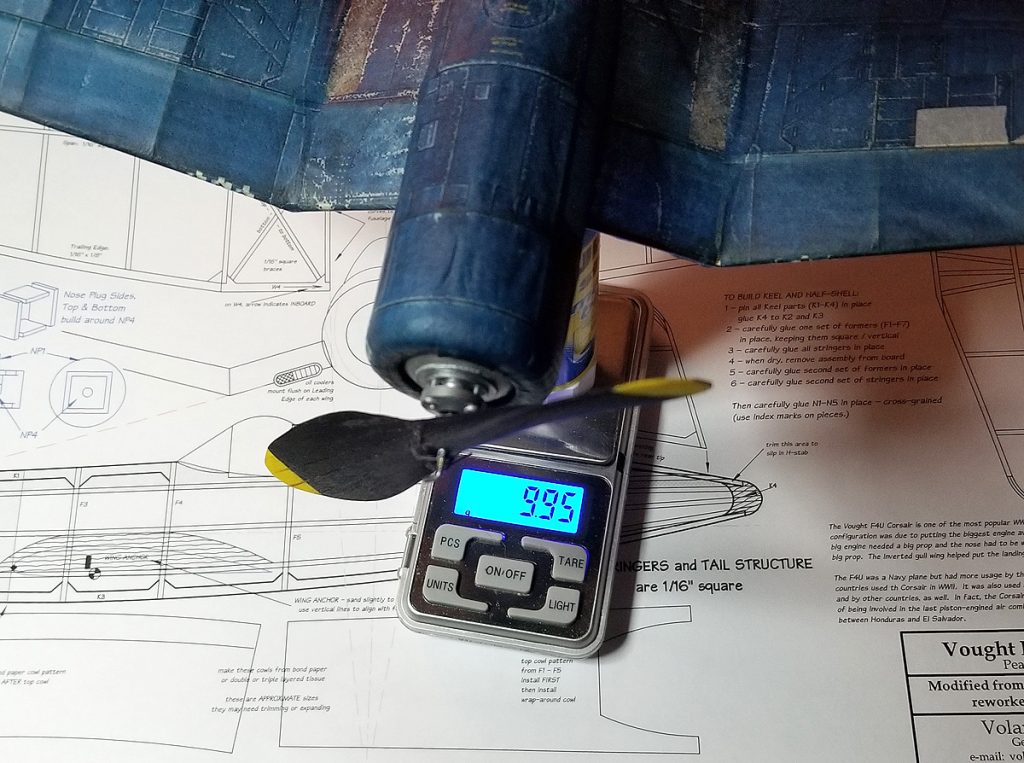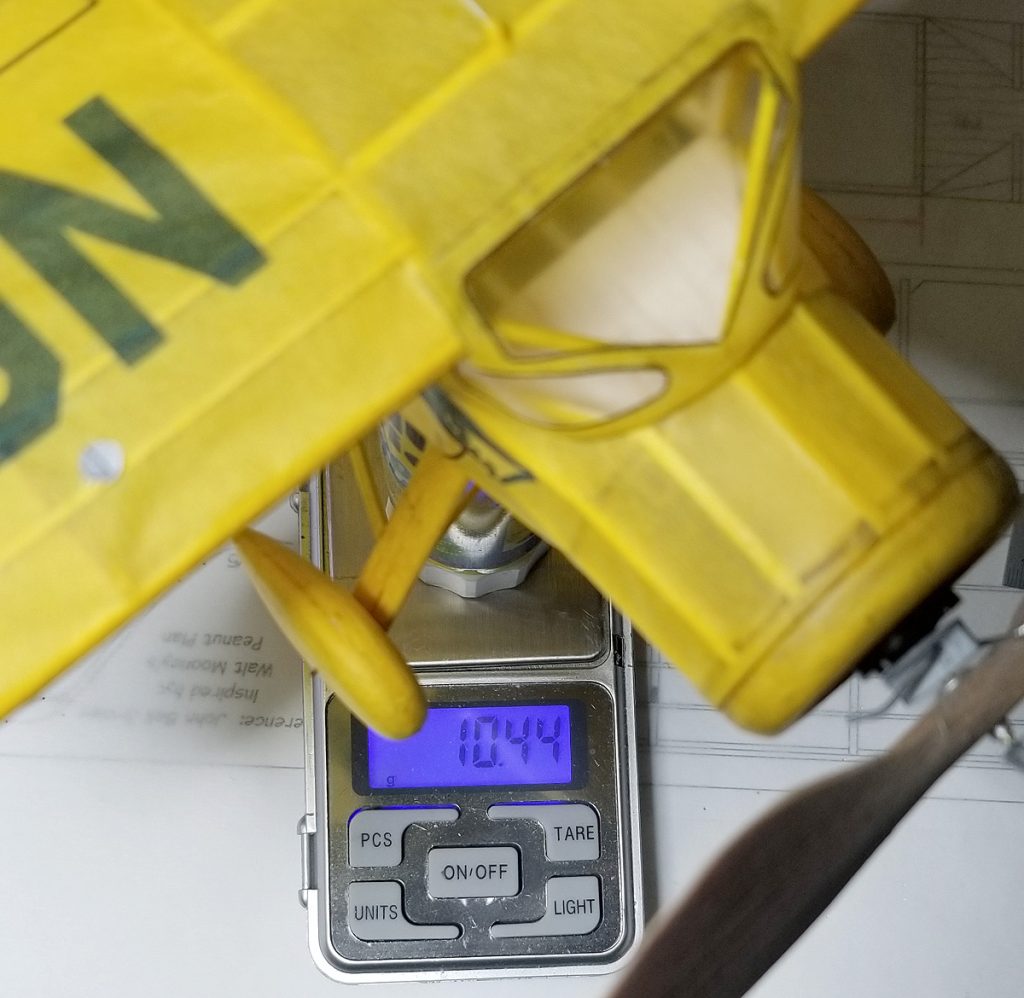I want to start this by saying that I’m no expert. Some may argue that point, but it is my feeling that I still have so much to learn. Today, I am thinking if I have learned a little bit about building lightly to produce model of surprising (to me) light weight. How is it possible?
I am, by nature, a bit of an analytical person; I think about what does this and what causes that and how what I do can fit in. Much of my modeling has been “that’s good enough” and “that can’t help that much” (I still don’t use things like teflon washers).
I have always liked Peanut models. I’ve built many, many of them. And I have been relatively successful with them and they have provided me with MANY kanones. But I have always marveled at how others were able to get surprisingly light weights out of their Peanuts. Mine always seemed to be 30%-50% heavier – and when you’re talking a tiny Peanut, that weight differential is substantial.
However, my last three full-bodied models (not NoCal) have turned out really light (for me). The analytical side of me seems to see a pattern. And it is possible that the Solution of Light is clearly obvious (and contrary to “that’s good enough”).
Keep in mind that these three models are a) not super light and b) meant for indoor flying. But I think the principles can be transferred. More after photos:
For me, these are light planes. Especially surprising to me was the 10 gram Corsair and the 10.5 gram WACO – both have Gizmo Geezer nose buttons (1g heavier than a Peck nose button – so they “could” be even lighter). But the Corsair has lots of structure and the WACO has four wings and full landing gear with pants.
So how did they get so light? Well, I started out building each of these with the INTENT that they should be as light as I can comfortably build. To that end, each was built with 5#-6# wood, laser-cut parts and stringers. Secondly, I used thinned SigMent throughout the builds (I normally use CA). Lastly, because these three are intended for indoor flying, They are not doped or sprayed or sealed with anything (the Corsair is 100% printed tissue – does that count?)
Normally, I would build from 8# formers and 10# stringers. And I would use medium CA and spray with Krylon (or Future) to finish up the parts. And normally, a complicated biplane would come out to be 15 or more grams. I’ve had very successful outdoor embryos tip the scales at 18, 19, and 20 grams. Of course, they were built with CA and HARD longerons. But this begs the question – does over-building for conditions (rough outdoors and high power), create planes that NEED huge motors? Would my Embryos have preformed as well – or better – if they were 30% lighter? What about 50% lighter? Can I fly a 11 gram outdoor Embryo?
So, lesson – or at least a thought exercise – the logic of “that can’t make that much difference” just might be faulty. A little bit here and there really can add up. And now there is much more to think about…



